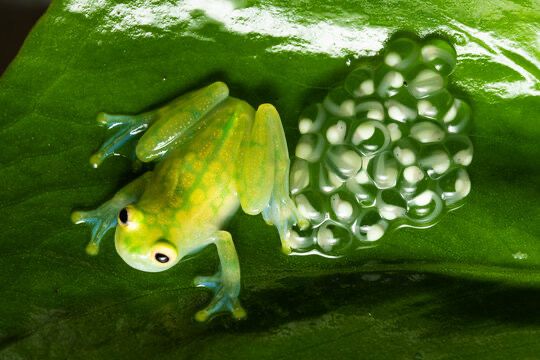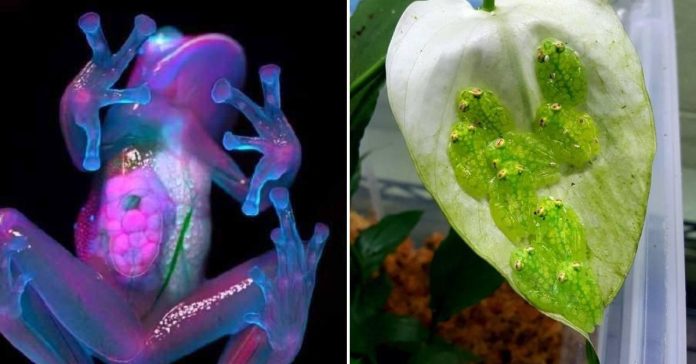When it comes to bizarre and breathtaking creatures, few animals leave a lasting impression quite like the glass frog. At first glance, this tiny amphibian looks like just another green frog hiding among the leaves — until you look closer. Its belly is so clear that you can see its heart beating and its organs moving inside. This incredible see-through appearance makes the glass frog one of nature’s most unique and mysterious animals.

What is a Glass Frog?
The glass frog belongs to the amphibian family Centrolenidae and is found mostly in the tropical rainforests of Central and South America. There are more than 100 species of glass frogs, each with slight differences in size, skin tone, and transparency.

What sets them apart from other frogs is their translucent skin, mainly on the lower side of their bodies. From underneath, their internal organs are clearly visible — including the beating heart, liver, stomach, and even blood vessels. It’s like nature’s own X-ray window.
What sets them apart from other frogs is their translucent skin, mainly on the lower side of their bodies. From underneath, their internal organs are clearly visible — including the beating heart, liver, stomach, and even blood vessels. It’s like nature’s own X-ray window
Why Is It Transparent?

Scientists have studied the glass frog’s transparency with great interest. Some believe the see-through skin helps the frog blend into its environment. This natural camouflage, known as “edge diffusion” makes it hard for predators to detect the frog’s outline against the leaves and forest floor.
Recently, researchers discovered that the frog’s transparency isn’t just about the skin — their red blood cells actually hide inside the liver when they’re resting, making the body even clearer. That means the glass frog’s invisibility is not only skin-deep — it’s happening inside its body!
Where Do They Live?

Glass frogs prefer to live in rainforests and cloud forests, especially near rivers and streams. These moist environments are ideal for laying eggs, which is a vital part of their survival. The eggs are usually laid on leaves hanging over the water. When the tadpoles hatch, they fall directly into the stream below, where they grow into adult frogs.
Fascinating Behavior

Glass frogs are mostly nocturnal, meaning they are active at night. Males sing loudly to attract females during the breeding season, and what’s even more interesting — in many species, the males guard the eggs. This is rare in frogs. The male will watch over the jelly-like egg clusters, protecting them from insects and environmental threats.
This behavior shows that the glass frog isn’t just beautiful — it also displays an uncommon level of parental care in the animal kingdom.
Threats and Conservation

Despite their charm, glass frogs face serious threats from deforestation, pollution, climatechange, and illegalpet trade. As more rainforests are cleared, these frogs lose their homes and breeding grounds. Their sensitivity to environmental changes also makes them important indicators of ecosystem health.
Conservationists are working to protect their habitats and raise awareness about their importance. If we want to keep witnessing the wonder of transparent frogs, we must also protect the forests they call home.
Final Thoughts

The glass frog is a shining example of nature’s creativity — a creature that literally shows us its inner beauty. With its transparent body, rare behaviors, and hidden life in the rainforests, it reminds us how much there still is to discover in the wild.
At Bamboospanda, we celebrate these fascinating creatures to inspire curiosity and appreciation for the animal kingdom. Stays with us as we uncover more animals you won’t believe actually exist because the world is more magical than we think.

